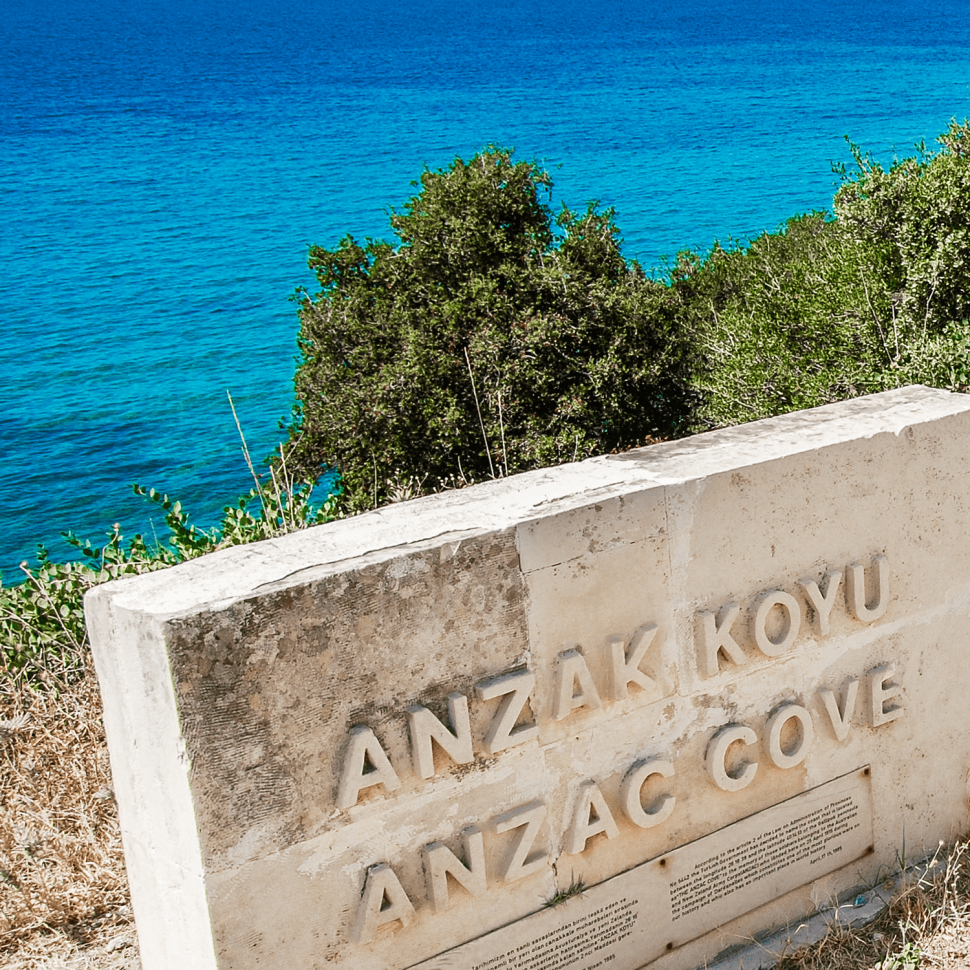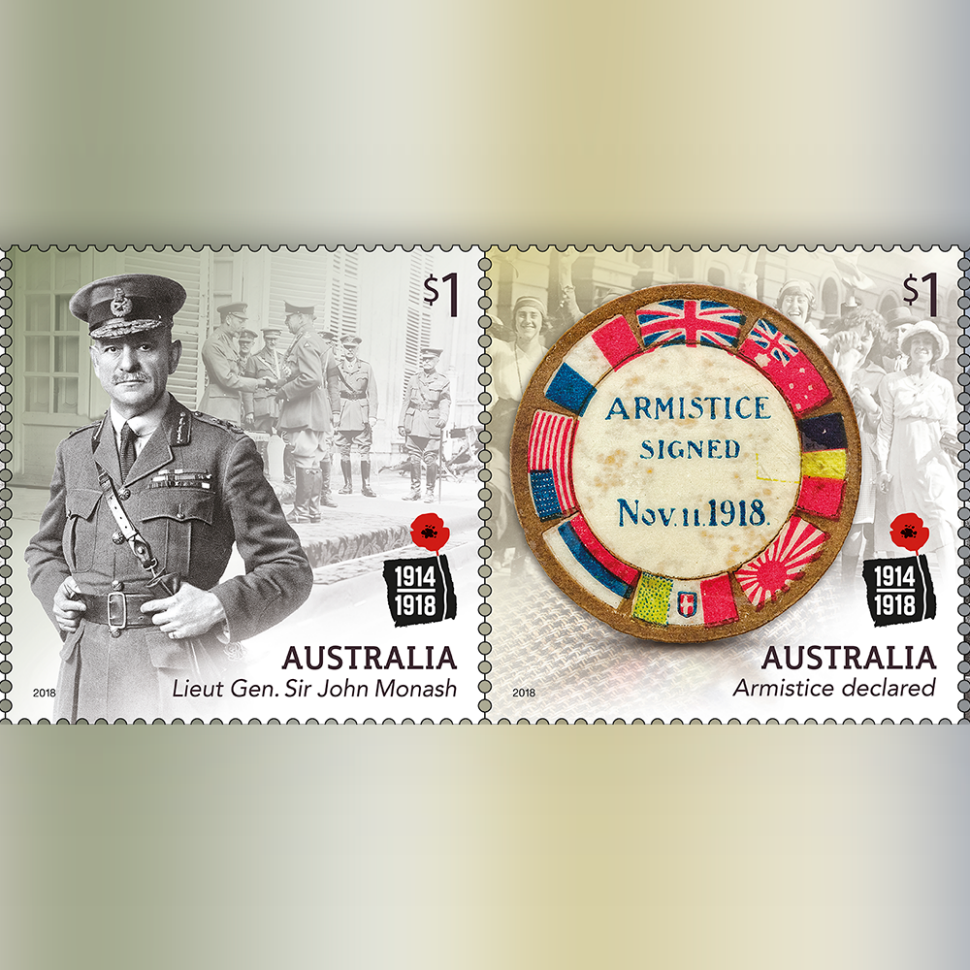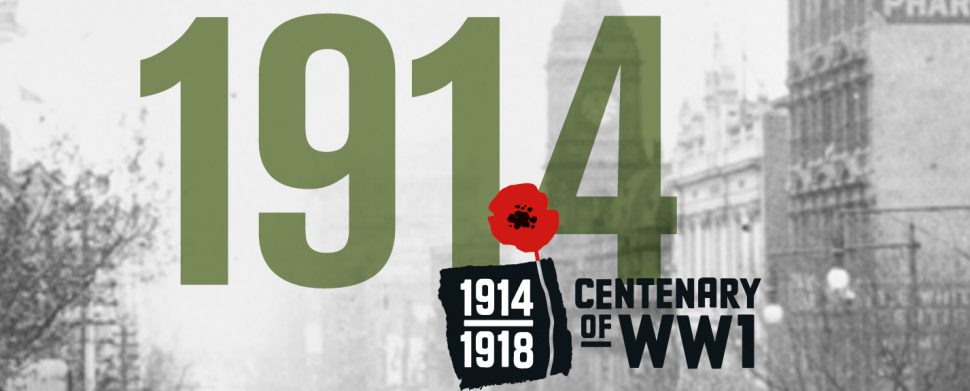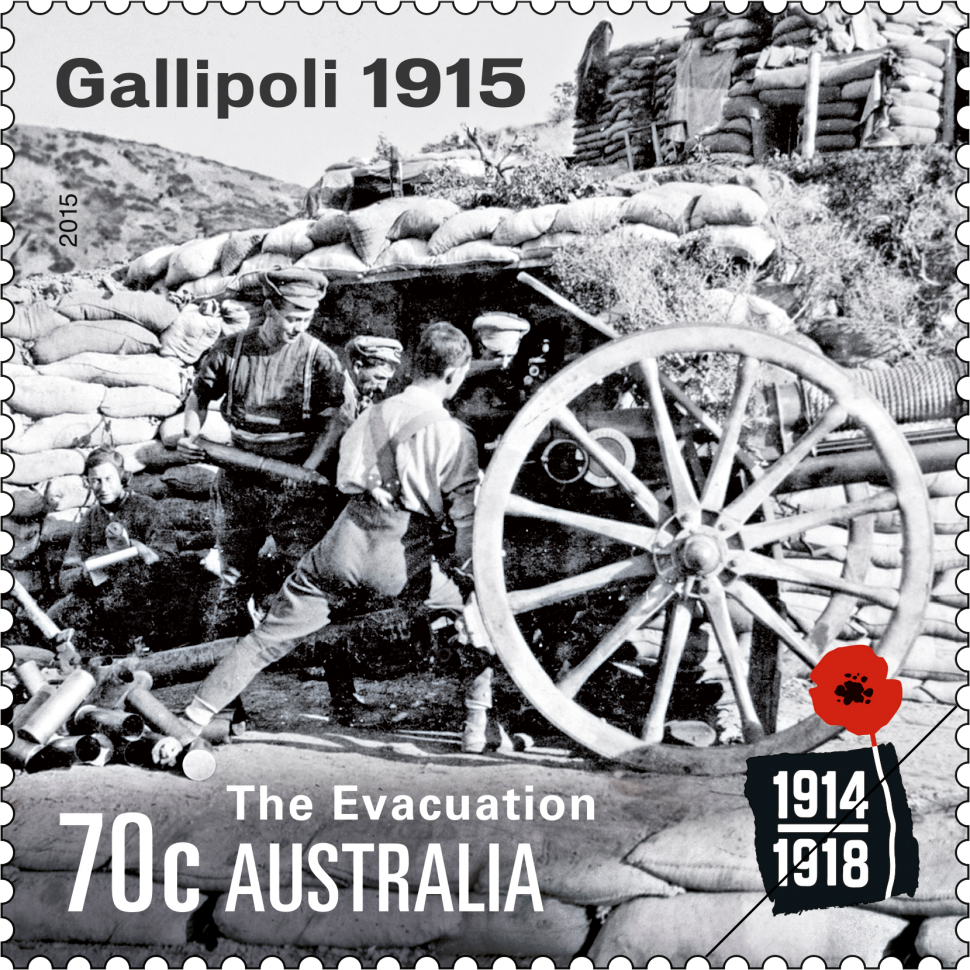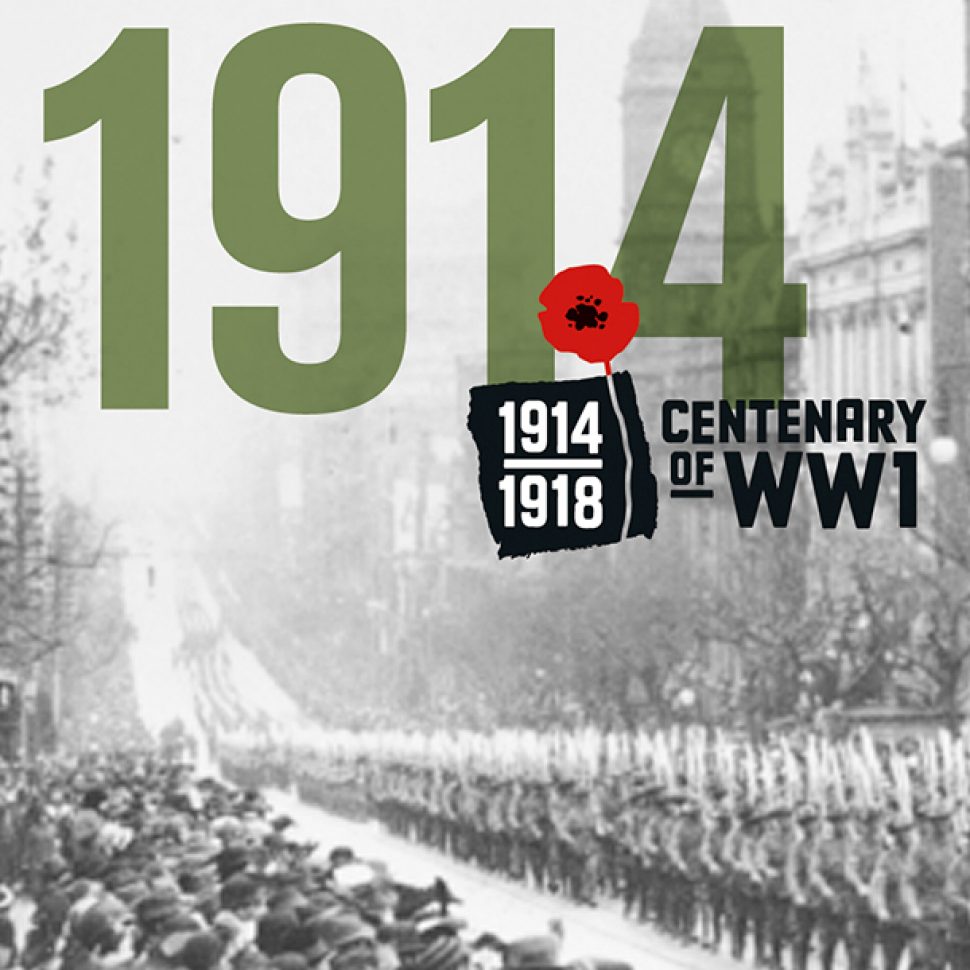The centenary of World War I is an important moment in time, receiving a massive amount of attention nationally and internationally. The Australian Government has put tens of millions of dollars towards a whole series of events, exhibitions and education resources running over a five-year period, 2014–2018.
So how has the Australia Post Philatelic team approached its Centenary of World War I five-year stamp series? How can we ensure that we contribute something unique and worthwhile? How can we possibly condense a long, complex and rich story into the size of a postage stamp?
Considering the broader context
In order to develop a suite of national commemorative activities, the Australian Government set up various bodies, including the Anzac Centenary Advisory Board and the National Commission on the Commemoration of the Anzac Centenary.
The commission, after extensive consultation, recommended some main themes, including a century of service and a focus on commemorative dates. The commission even noted that stamps would be an example of a way to commemorate the centenary.
Similarly, the advisory board developed some objectives, including recognising the special and poignant nature of the anniversary, acknowledging sacrifice, reflecting on Anzac values, highlighting lesser-known stories and to consider all wars, conflicts and peace-keeping operations up to and including current ones.
Planning, planning, planning
From a Philatelic perspective, not all of the national objectives were relevant or achievable. While including less well-known stories, showing a “century of service” and commemorating the war in a poignant and special way would be possible, broadly focusing on all wars, conflicts and peace-keeping efforts would not. We wanted to present a coherent story, and clarity of story is paramount when it comes to stamps.
With this context in mind, the Philatelic researcher for this series, Hilary Ericksen, went to Canberra to meet with a historian from the Australian War Memorial, who continues to consult on the series. This helped her to develop key information and themes and to discuss the visual material that might be relevant and available.
Mapping the war
The team decided 5 issues of five stamps would allow for a fairly complex story of Australia’s part in the Great War, in a way that would highlight key events, include lesser-known stories, show the war unfolding and map its impact. The series would be chronological, with each issue representing a specific year. By establishing a grid of five recurring key themes, or touchstones, the researcher could condense and convey the complex history across the five years. The touchstones are:
- key events (such as the landing at Gallipoli)
- conflicts (the key theatres and territories of war)
- the home front (such as the conscription referenda that took place)
- individuals (military officials and regular soldiers; men and women)
- a general category to catch anything not easily categorised
The first draft of grid was then reviewed and developed further, as the themes for each year were fleshed and imagery researched and selected. The objective is for diverse and inclusive representation across the five years.
A complex story, simply told
The chronological “themed” approach allows the stamp viewer to build up quite a complex, yet clear, picture of the unfolding war, overseas and at home, and brings unity to how the story is told over a long period of time.
We can see this in action through the 2014 and 2015 stamp issues. In Centenary of World War I: 1914: the “home front” is the declaration of war; the “event” is the troops departing; the “conflict” is the first action of the war with Australian involvement, the seizure of German New Guinea; the “individual” is represented by the rank and file young Australians who enlisted in droves (“our boys”); and the “other” element is the Mena training camp, where the first convoy of troops trained in the shadow of the pyramids of Egypt.
Similarly, in Centenary of World War I: Gallipoli 1915: the “event” is the landing, the “individual” is Albert Jacka, the first Australian winner of the Victoria Cross during the Great War and also representing a key moment in the Gallipoli campaign, in the Turkish counter-attack; the “conflict” is the battle of Lone Pine.
Given the importance of Gallipoli in our national consciousness, the home front theme was sacrificed to a full focus on this campaign, with field medicine represented through Simpson and his donkey, and the evacuation of troops (the additional category) marking the fourth key phase of the Gallipoli campaign.
Complementary stamp issues
While the main stamp series weaves a central thread chronologically, there are other aspects of the Great War that are highlighted along the way as stand-alone stamp issues. These have been chosen because they were significant events in and of themselves that required a different approach.
To date, these stamp issues have included A Centenary of Service: Australian Defence Force (2014), Australian Red Cross Centenary (2014), Centenary of Military Aviation and Submarines (2014) and, most recently, Animals in War (2015) and the ANZAC: Australia – New Zealand Joint Issue (2015).
The 2015 Australian Legends stamp series also relates to military service, namely Victoria Cross winners, and the Sydney–Emden engagement was recognised in the Australian External Territories stamp issue program.
The design approach
- Incorporate historical images, combined with modern design
- Ensure each stamp issue looks related to each other, yet distinct
- Engage a different designer for each stamp issue to ensure each is distinct
- Develop a WWI centenary logo to tie the series together and to highlight its special nature
- Modify the logo for complementary stamp issues, such as used on the 2015 Animals in War stamp issue
The problem with historical images …
There are many historical images from the Great War. The difficulty in stamp production is finding images that are of suitable quality and composition to reproduce clearly and meaningfully at stamp size. Also some key battles, such as the Battle of Fromelles (1916), were brief and fierce, making photography unlikely and difficult. This means that, in some cases, additional Philatelic products have been or will be developed to mark key events in ways other than on a stamp.
The availability of imagery is vital in determining design direction. For example, there are not a lot of 1914 images (major war photographers did not start recording the war immediately) and their quality is relatively poor. But such challenges can also encourage creative responses. Designer of the 1914 stamp issue, Tim Hancock, presents each stamp as a news bulletin, introducing graphic headlines and quotes, and “posterising” the imagery so it reflects the look of a newspaper. After all, the outbreak of war was communicated through newspaper headlines! In the 2015 Gallipoli stamp issue, however, we can see that designer Janet Boschen was able to bring the striking images to the forefront.
Where to next?
The 2016 stamp issue is currently in production. It brings us to the point in the Great War where the Western Front is centre stage, following the evacuation of the Anzacs from Gallipoli.
Stay tuned …
This article was produced at the time of publication and will not be updated.
You might also like
